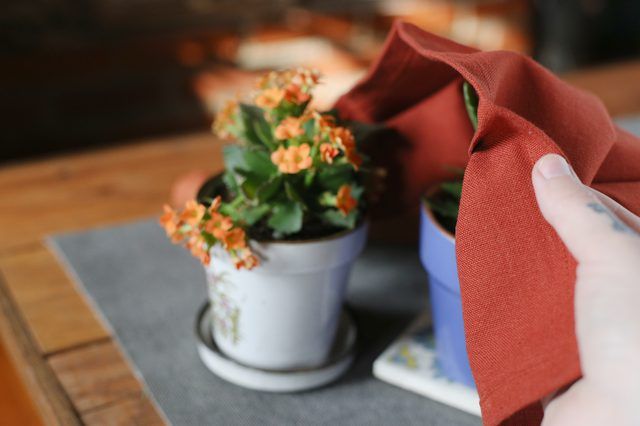Bulbs
Flower Basics
Flower Beds & Specialty Gardens
Flower Garden
Garden Furniture
Garden Gnomes
Garden Seeds
Garden Sheds
Garden Statues
Garden Tools & Supplies
Gardening Basics
Green & Organic
Groundcovers & Vines
Growing Annuals
Growing Basil
Growing Beans
Growing Berries
Growing Blueberries
Growing Cactus
Growing Corn
Growing Cotton
Growing Edibles
Growing Flowers
Growing Garlic
Growing Grapes
Growing Grass
Growing Herbs
Growing Jasmine
Growing Mint
Growing Mushrooms
Orchids
Growing Peanuts
Growing Perennials
Growing Plants
Growing Rosemary
Growing Roses
Growing Strawberries
Growing Sunflowers
Growing Thyme
Growing Tomatoes
Growing Tulips
Growing Vegetables
Herb Basics
Herb Garden
Indoor Growing
Landscaping Basics
Landscaping Patios
Landscaping Plants
Landscaping Shrubs
Landscaping Trees
Landscaping Walks & Pathways
Lawn Basics
Lawn Maintenance
Lawn Mowers
Lawn Ornaments
Lawn Planting
Lawn Tools
Outdoor Growing
Overall Landscape Planning
Pests, Weeds & Problems
Plant Basics
Rock Garden
Rose Garden
Shrubs
Soil
Specialty Gardens
Trees
Vegetable Garden
Yard Maintenance
How to Care for a Calandiva Plant
How to Care for a Calandiva Plant. "Calandiva" kalanchoe (Kalanchoe blossfeldiana "Calandiva"), a cultivar developed in the Netherlands, flowers for six full weeks in late winter and early spring. You can grow it outdoors in U.S. Department of Agriculture plant hardiness zones 10 through 12 or as a houseplant in colder...
"Calandiva" kalanchoe (Kalanchoe blossfeldiana "Calandiva"), a cultivar developed in the Netherlands, flowers for six full weeks in late winter and early spring. You can grow it outdoors in U.S. Department of Agriculture plant hardiness zones 10 through 12 or as a houseplant in colder climates. "Calandiva" gets along well with minimal care and will flower in the middle of winter -- as long as it's indoors -- with only minor manipulation.
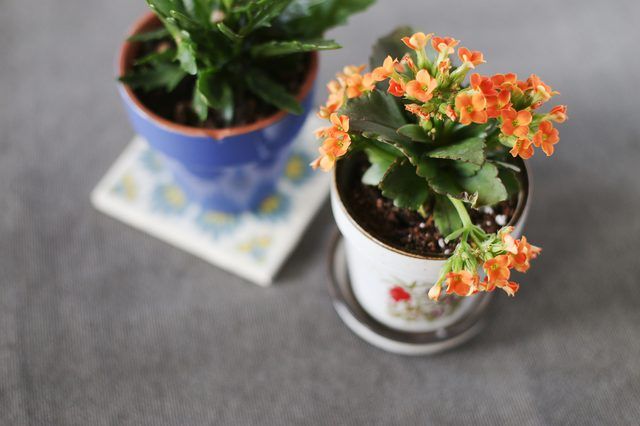
Allow the soil to dry out 2 to 3 inches deep between waterings then water deeply to thoroughly moisten the root zone. In containers, water until a little excess starts to drain out the bottom holes. Outdoors, add enough water to soak the soil 5 to 6 inches deep. Avoid overwatering "Caldaniva." This fleshy-stemmed plant is particularly susceptible to root and stem rot if it sits in consistently wet soil. Always plant container-grown plants in pots with drainage holes.
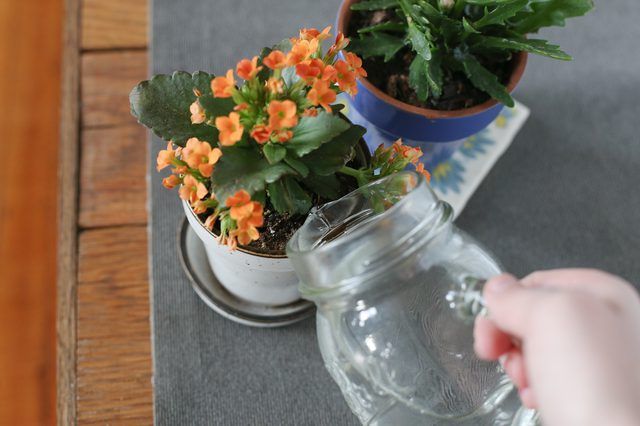
Fertilize indoor container-grown "Calandiva" one to two times per month from spring through fall then stop fertilizing through the winter. A balanced fertilizer formulated for flowering houseplants works well. Use 1/2 teaspoon mixed with 1 gallon of water per plant and pour it onto the soil, or follow the instructions on the fertilizer label. This replaces one normal watering session. Outside "Calandiva" needs a single dose of balanced fertilizer once a year in the spring. Mix 2 tablespoons of 20-20-20 fertilizer into 2 1/2 gallons of water and water the soil at the base of each plant. One 2 1/2 gallon mixture feeds "Calandiva" in a 10 square-foot bed.
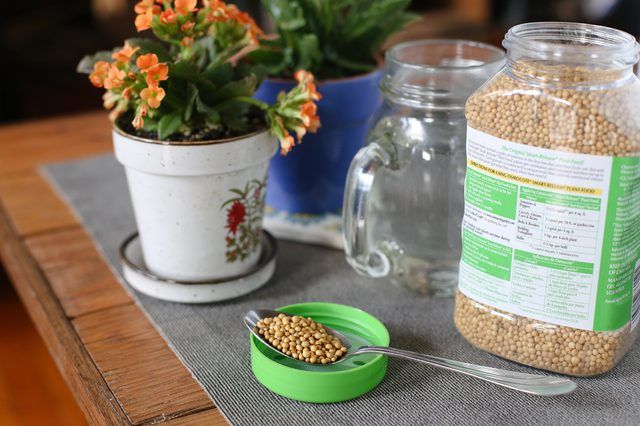
"Calandiva" forms a naturally bushy shape without pruning or shaping. Once the flowers die, pinch or clip them back where they attach to the stem. This step, while not required, makes "Calandiva" look tidier after flowering. Remember to wash your hands before and after pinching the flowers to minimize the risk of spreading plant diseases. The cultivar "Calandivia" branches out naturally eliminating the need to pinch back new growth, a standard pruning technique for other related cultivars.
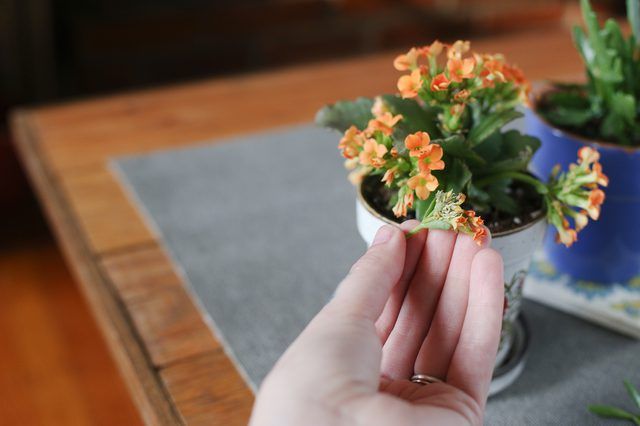
Keep "Calandiva" free of pests by inspecting it weekly and treating problems quickly. Wash off aphids -- tiny soft-bodied winged insects -- with a spray of water from the hose or shower head. Flick off scale -- you'll see raised, wartlike growths on the stems -- with your fingers. Keep an eye out for mealybugs, white sap-suckering insects 3/16 inches long and wash them off with a stream of water on first sight. If hand picking and rinsing doesn't work, use insecticide that contains pyrethrins, typically diluted at a rate of 1 tablespoon per 1 quart of water. Spray it directly on the insects every 10 to 14 days until they disappear. Read the directions on the label as rates vary by brand. Wash your hands after dislodging and handling insect-infested plants. If possible, treat houseplants outside.

You can get a "Calandiva" plant to flower in winter as long as it's growing inside where you can control the light source. Starting in early fall, keep "Calandiva" in complete darkness for 14 to 16 hours per night for a six full weeks. Two options for restricting light include moving the pots to a pitch-dark room or closet or gently laying a dark colored cloth over the plant. Once the buds form, usually within the month, "Calandiva" will display a full show of flowers by the middle of winter. Indoors, this cultivar prefers a consistent temperature between 60 and 75 degrees Fahrenheit.
